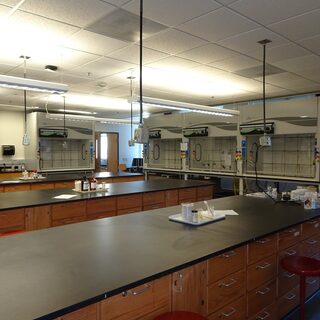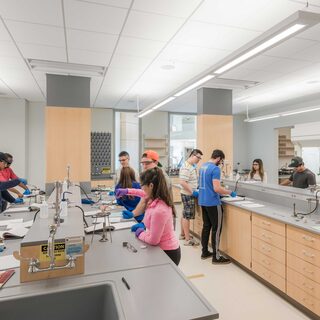Tradeline's industry reports are a must-read resource for those involved in facilities planning and management. Reports include management case studies, current and in-depth project profiles, and editorials on the latest facilities management issues.
Latest Reports
Creating Swing Space for Liberal Arts STEM Renovations
As many institutions of higher education increase STEM offerings, the impact can be more pronounced at liberal arts colleges, because the growth in STEM typically results in new construction or renovation in their only science building. The construction of new space is most challenging in organic chemistry, where the number of fume hoods per section is a unique pedagogical requirement. To avoid disrupting a department entirely during construction, an institution can encourage students to take a course elsewhere—at a community college or nearby university partner—or to plan their schedule to avoid the downtime. But this reduces only the number of sections, not the entire need, because maintaining the faculty’s teaching ability and course’s availability to students are critical to the institutional mission. The solution is to find or create swing space.
University Hall
The four-story, 191,000-gsf University Hall at University of Massachusetts Boston contains general purpose classrooms and three academic departments: art, performing arts, and chemistry. The building intentionally blends the arts and sciences to create a collaborative learning experience for students that opens the possibilities for a true ‘Renaissance’ academic engagement. University Hall establishes the academic hub of the University and brings a sense of collegial unity to the campus.
Academic Science Facilities for the “Renaissance Student”
Science education programs in the U.S. and Europe expect their graduates to be able to think analytically, solve problems creatively and collaboratively, and be critical consumers of information. To support their progress, they must have strategically planned buildings and an integrated curriculum. Universities in Dublin, Ireland, and Lexington, Kentucky, offer tangible examples of this evolution in science education.
New U.K. University Plans Bold Changes to Engineering Pedagogy
While the drive to revamp engineering education continues to gather steam, the bold approach pioneered by the U.K.’s first new university in four decades is more revolutionary than evolutionary. Describing itself as “an unprecedented opportunity to inspire and teach a new generation of engineering talent,” New Model in Technology & Education (NMiTE) will debut with innovations such as a three-year degree program, unconventional admissions criteria, a mandate for gender balance, and a facilities design that won’t be finalized until students give it a trial run.
Engineering and Science Building (ESB)
Vanderbilt University’s new Engineering and Science Building (ESB) brings the physical sciences and engineering together to expand interdisciplinary research in biomedical engineering, energy, and materials; recruit faculty in areas of nanotechnology and environmental engineering; and create a new undergraduate research-focused culture on campus.





